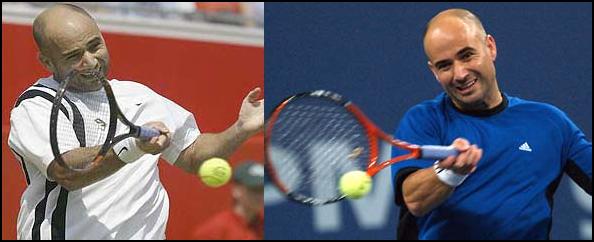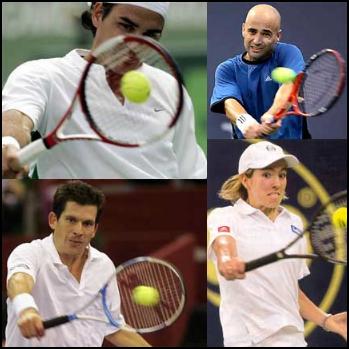ATXtennisaddict
Hall of Fame
If you watch the pros, most of them can watch the ball travel all the way to their stringbed as they are about to hit it.
I've tried it, the ball is too damned fast!
I've tried it, the ball is too damned fast!
If you watch the pros, most of them can watch the ball travel all the way to their stringbed as they are about to hit it.
I've tried it, the ball is too damned fast!
If I concentrate I can do it...
Note: It is not humanly possible to SEE the ball all the way on most shots. We had a lengthy discussion of this in an a very recent thread and numerous threads in the past.
.
You can see a blur, can't you?
When I see a blur of my racket going through the strikezone, I know I have watched long enough.
You can see a blur, can't you?
Why can't one see the ball all the way to impact? Most balls, after bouncing are not that fast. Moreover, since it is moving towards the subject, the lateral movement is not that fast for the eyes to follow except for maybe the last couple feet when the lateral component of the ball's velocity vector becomes greater relative to the eyes' position. Put it this way, you could watch a ball coming right at your face because there is very little lateral movement to track. A person catching a 90mph hardball can watch the ball all the way into his glove, right?
As to why we tend to look up, I think our brains connect hitting a ball to a target with throwing a ball to a target, but we don't realize that they are not the same. When we throw at a target, we are looking at the target the whole time, whereas when you hit a ball with an implement, well, you know..
Fed sees it blur out and then disappear as frame comes into frame. He has spoken on this. Chang did the same. Others have as well. Most cannot. Others telling us we cannot see a blur is just silly, and somewhat insane. Yes it blurs out, yes we see the blurring frame come into play, yet others claim we don't? Just the internet for you.
Not me, I can watch until the ball get's over the net, then everything is decided.
For most serves, I actually don't look at the ball.
OTOH, I'm a pretty bad tennis player for my potential.
yes his head is tilted, but he definitely is not "seeing" the ball right to the string bed
Thats because its not a regular groundstroke. He is hitting a return of serve here so the ball must be traveling fast. Seeing that its going to his forehand, its likely a first serve and obviously very fast and difficult to watch all the way even for Mr. Federer (but im sure he could do it if he tried and thought about it). You will rarely see him not tracking the ball all the way to the string bed and keeping his eyes on the contact point even after the ball has been struck.
I find that watching the ball all the way to impact is very useful and produces better strokes. I see it as a "still picture", others describe it as seeing the ball slow, seeing the ball bigger, or as Agassi put it "I hit the ball when it stops". Watching the ball hit the strings on the serve is extremely helpful in my experience and for my students as well.


I see what I see.
It's not about seeing the ball hit the strings, it's about keeping your head still through your stroke.
Ever try this under a strobe light?
